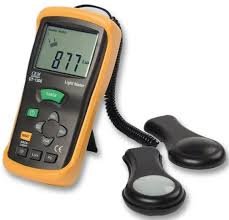Lux or Light intensity standards in Pharma industry.

📌 Lux (Light Intensity) Standards in Pharma Industry
Light intensity in pharmaceutical facilities is crucial for ensuring product quality, safety, and compliance with cGMP and cleanroom requirements. It is measured in lux (lx), which represents lumens per square meter.
🔬 Importance of Light Intensity in Pharma
-
Ensures clear visibility during manufacturing, sampling, weighing, and inspection.
-
Helps in detection of particulate matter, contamination, and product defects.
-
Supports data integrity by allowing operators to read labels, instruments, and records accurately.
-
Regulatory agencies (US FDA, EU GMP, WHO) expect adequate illumination in classified areas.
✅ Typical Light Intensity (Lux) Standards
| Area / Activity | Required Illumination (Lux) | Remarks |
|---|---|---|
| General manufacturing / corridors | 150 – 300 lx | For movement and basic activities |
| Weighing, dispensing, sampling areas | 300 – 500 lx | Ensures accuracy in material handling |
| Critical manufacturing / cleanroom (Grade A/B) | 500 – 700 lx | High visibility to detect contamination |
| Inspection areas (visual inspection of injectables, ampoules, vials, tablets) | 1000 – 2000 lx | Critical for particulate/defect detection |
| Warehouse / storage areas | 150 – 250 lx | For proper identification of materials |
| Engineering & utility rooms | 200 – 300 lx | Sufficient for equipment operation/maintenance |
| Laboratories (QC/Analytical) | 500 – 1000 lx | Required for precision testing and documentation |
(Exact values may vary depending on ISO cleanroom guidelines, IS standards, or local GMP regulations, but these are widely accepted ranges.)
📊 Measurement & Compliance
-
Measured using a Lux Meter at working height (~1 meter from floor).
-
Must be included in facility qualification protocols (DQ, IQ, OQ, PQ).
-
Regular monitoring and preventive maintenance of light fixtures required.
-
Records are part of GMP documentation.

